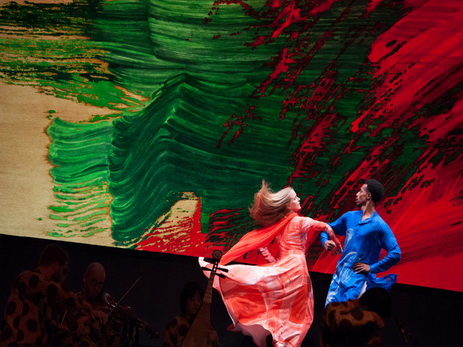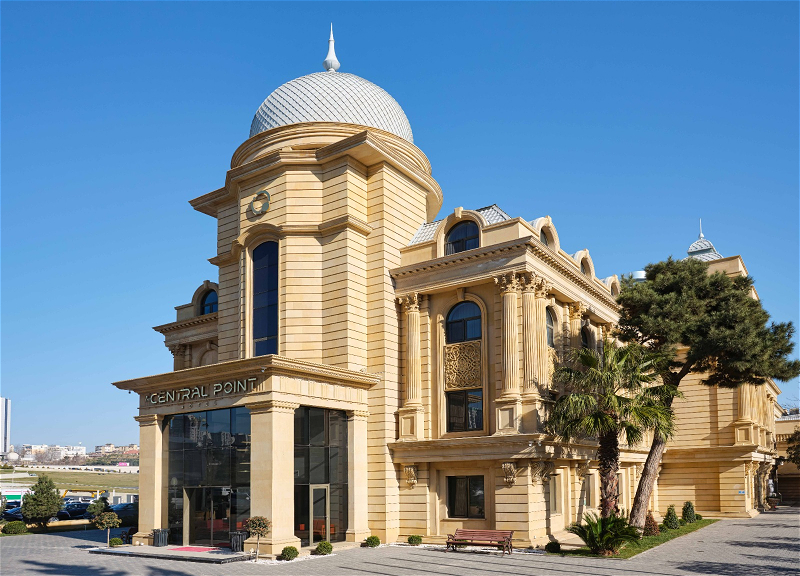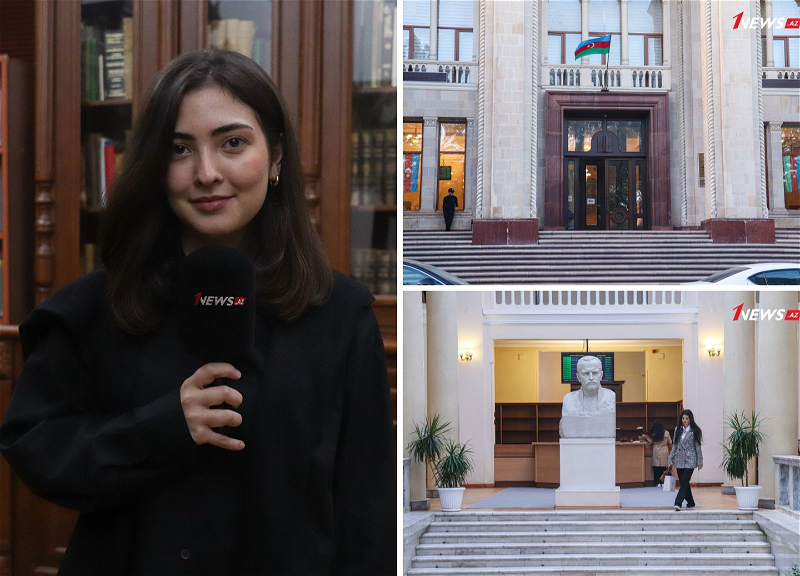NY Times Review: “Leyli and Majnun” – a Tale of Love Refracted and Multiplied

“My soul is on fire because we are apart. My only wish is to perish in the wilderness. My true love knows every sliver of sorrow in my heart.” “Dear God, let me feel even more despair for my love.” “The true purpose of love is sacrificing oneself.”
These lines, capturing various archetypal facets of Romantic love and anguish, come from the libretto of “Leyli and Majnun.” The story, known from the fifth century onward in oral versions, reached its first definitive form in the Persian romance of Nizami Ganjawi (1141-1209).
This classic, which has long pervaded Arabic, Persian, Azerbaijani and Indian culture, has now become a transcultural dance-drama that had its premiere on Friday night at Zellerbach Hall here. Mark Morris, who has employed several ethnic styles over the decades, choreographs and directs, in collaboration with the Silk Road Ensemble and the painter Howard Hodgkin.
Mr. Morris does not so much tell the Leyli-Majnun story as refract it, ritualize it, multiply it. The emphasis is all on emotion. Sometimes one couple from the group represents the hero and heroine; sometimes we see five Leylis and five Majnuns; sometimes one couple is offset by an ensemble that also at times suggests society, the lovers’ parents, the male and female hearts.
The staging — about 65 minutes including a long musical overture — is visually beautiful. An abstract backdrop painting by Mr. Hodgkin (realized as décor by Johan Henckens) shows a selection of intense colors, juxtaposing yellow, green and red, so that we feel them as warring but adjacent emotions.
Identical costumes — Hodgkin’s designs have been realized by Maile Okamura — for women (full-length orange, with flame-colored scarves) and men (blue jackets over black trousers with white scarves), help to suggest a multiplicity of Leylis and Majnuns.
The beauty is even greater for the ears than for the eyes. Mr. Morris’s music is the “Leyli and Majnun” opera composed in 1908 by Uzeyir Hajibeyli (1885-1948). This score, often known as the first opera of the Middle East, had its premiere in Baku, capital of Azerbaijan.
Mr. Hajibeyli’s score is a central work of Azerbaijani culture; Mr. Morris uses a condensed arrangement of it by Alim Qasimov, Johnny Gandelsman and Colin Jacobsen. The words are both printed in the program and projected in supertitles.
The outstanding feature of this Azerbaijani music is its vocal lines, all of which feature complex melismas: a single syllable is decorated with rapid flourishes, slow trills and firm downward slurs. The basic vocal sound (the mouth is never opened wide) is related to that used in flamenco, but softer, sweeter, more inward.
The stage is gently tiered. The musicians always occupy center stage, seated. Two young singers and two instrumentalists play the long “Bayati Shiraz” overture, which is undanced. It proves a perfect introduction to the sound world of the opera. The two wonderful vocalists (unnamed in the program, wearing white shirts) cast a spell as they embroider the expression of amorous obsession.
Two mature singers, 10 instrumentalists and 16 dancers (seven women, nine men) then perform the opera. The singers, Alim Qasimov and Fargana Qasimova, seated at the center of the other musicians, sing the roles of Majnun and Leyli. Ms. Qasimova’s voice glows gorgeously. The dancers occupy the peripheries of the stage — front, back, and sides. We never see more than 12 of them at a time: The number matches that of the musicians.
At times the dance idiom is based on that of Asian dervishes, with the arms and upper body holding a formal, side-tilting position while the dancer revolves on the spot — now slowly, now fast, though never for a long time. Elsewhere, intense through-the-body gestures tip the torso powerfully from side to side (the dancers stand with legs parted and knees bent), suggesting a maelstrom of emotion.
A few of the steps come from ballet. (One Majnun slowly retreats from his Leyli while extending a leg behind him into high arabesque; that Leyli replies with a matching arabesque but folds the leg inward, inverting his phrase.) There are jumping steps, fitted with folk-like inflections to the music. Although there are lifts amid the ensemble, the various Leylis and Majnuns address each other across space; the distance is crucial to the drama.
The words and music sometimes suggest depths that the dance does not match. The Leyli-Majnun romance is contemporaneous with the tales of courtly but adulterous love (Lancelot and Guinevere, Tristan and Yseult, Troilus and Criseyde) that pervaded the culture of Western Europe during the age of chivalry. Like them it connects love and death, flesh and spirit; it expresses desires for both consummation and transcendence.
Having watched two performances with pleasure, I long now to renew my acquaintance with Azerbaijani music in general and Hajibeyli’s opera in particular. Mr. Morris’s choreography deconstructs and distills the poetic legend with charm and taste.














